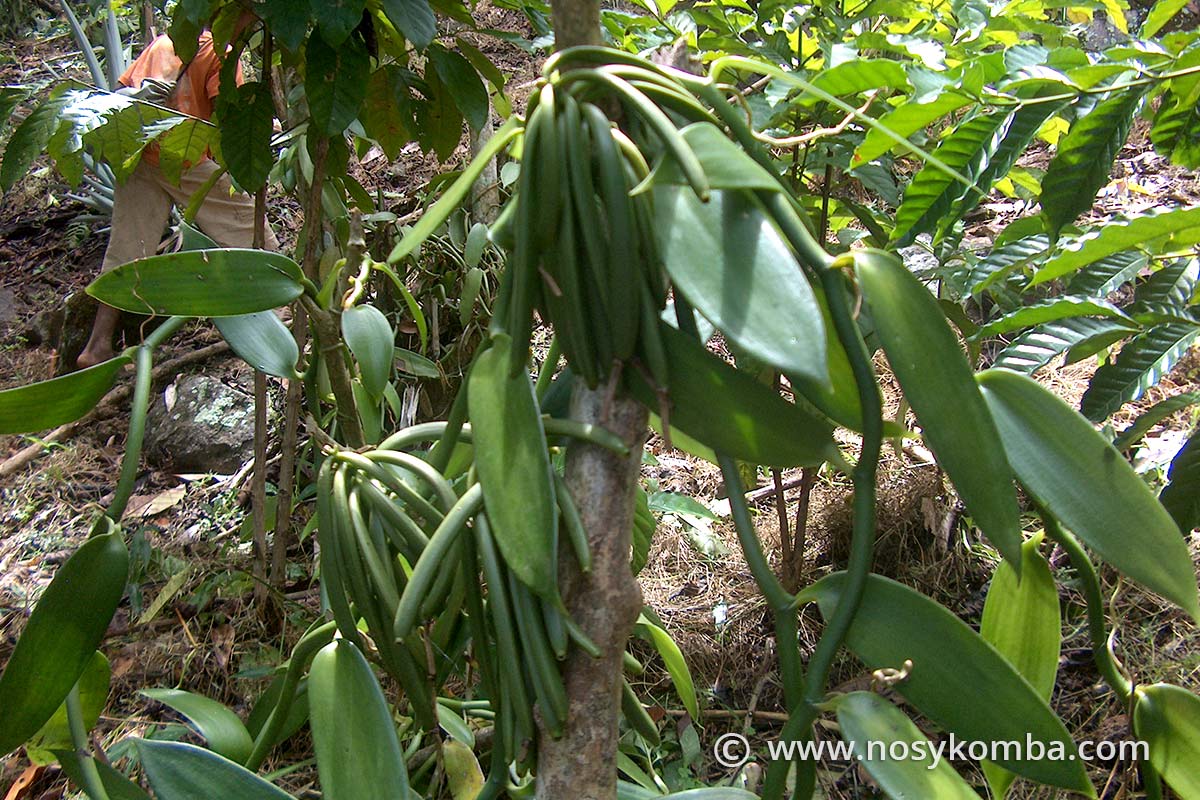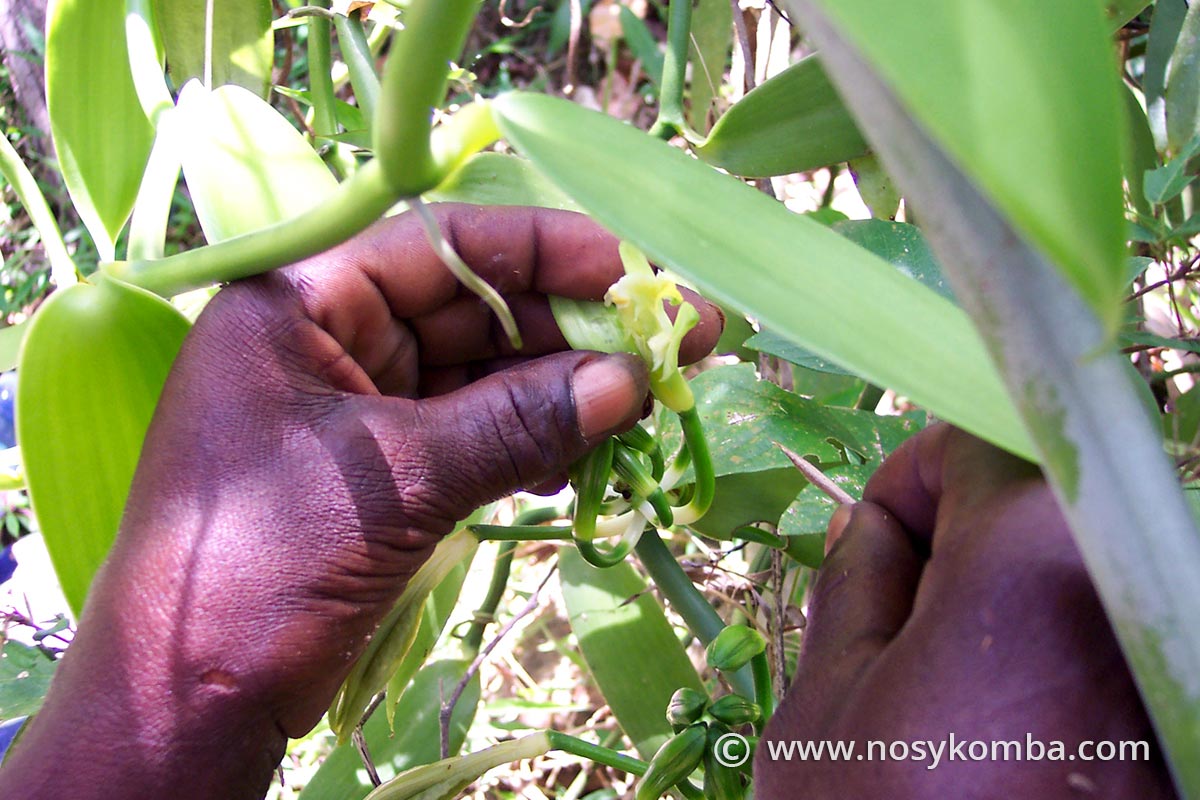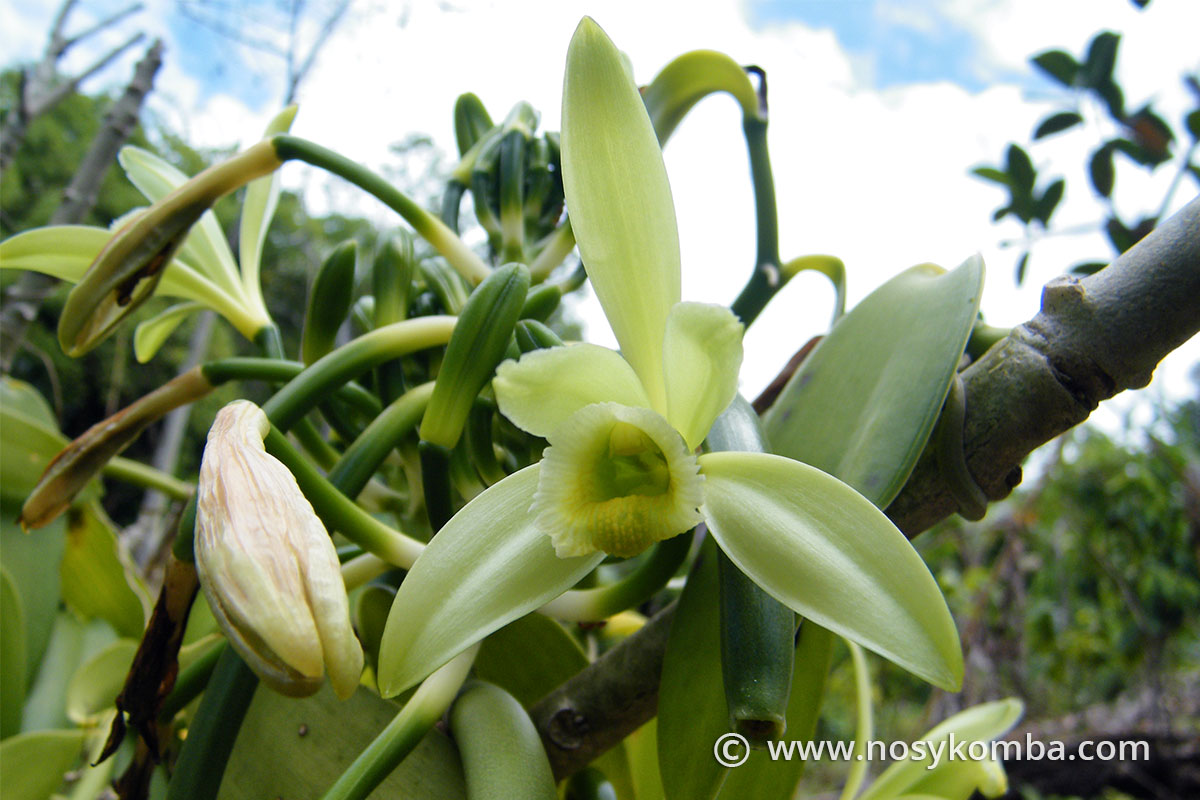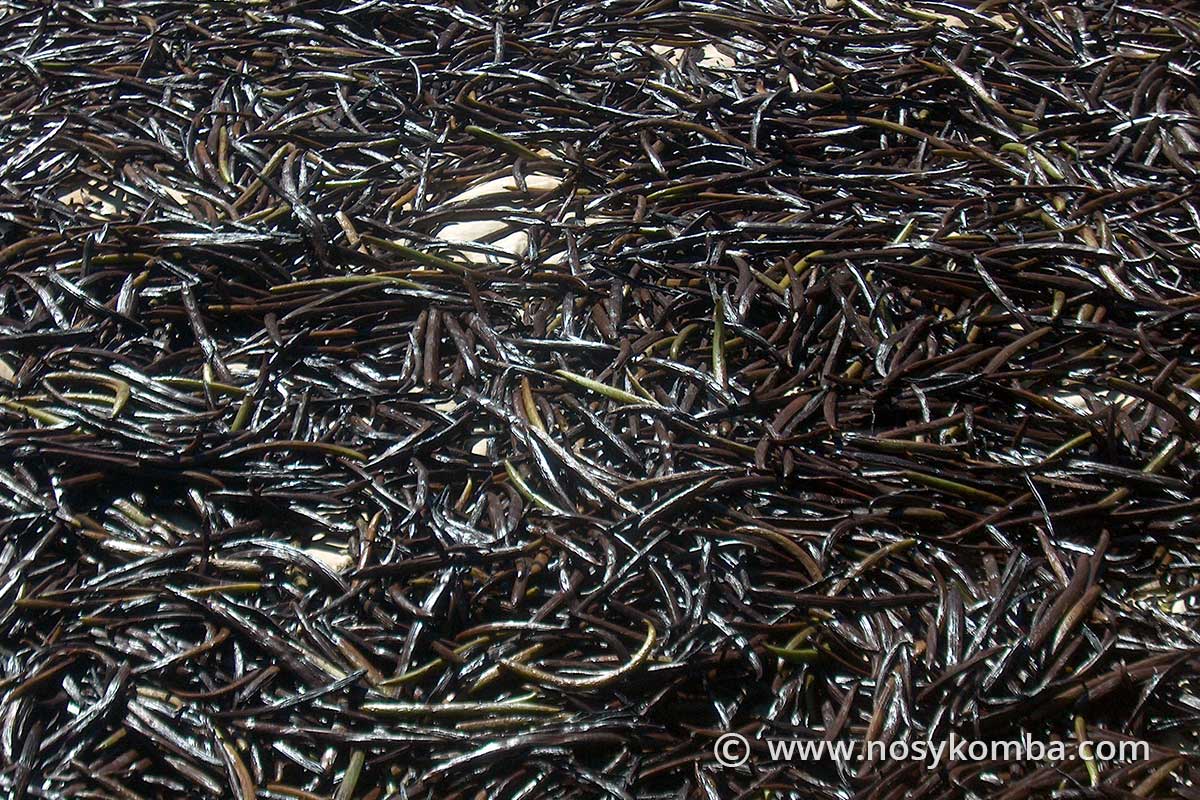Nature The vanilla plantations are mainly located in the mountain of the island, where the hot and humid climate is favorable to the blooming of vanilla.
Since a few years, more and more inhabitants of Nosy Komba having plots of land in the mountain started to cultivate this orchid.
Every year on the island of lemurs, in May, a “vanilla market” takes place; for a few days, farmers gather in a different village of Nosy Komba and sell their harvests to collectors coming from all over the country. Together they negotiate the price of vanilla, which varies according to the year and the demand.
But many months passed before the beautiful black pods could be obtained.
Origin
Vanilla is believed to have originated in tropical America.
Nowadays, it is also cultivated in Southeast Asia and Central Africa. But its first and main exporter is Madagascar. Vanilla is believed to have been planted on Île Rouge probably in the last decades of the 19th century. Since then, this orchid is cultivated in several regions of the country. But the city of Sambava in the north-east of the Big Island in the region of Sava is considered as the world capital of this delicious spice.
Planting
For it to flourish, vanilla must be planted in a place with a tropical climate. If it likes the sun and the heat on the other hand it needs shade, moisture and a support where to cling.
The methods of plantation are made on cleared grounds, under wood or under shade.
On the island of Lemurs, a haven of nature, the planting techniques used are those in cleared land or undergrowth. The orchid grows under the protection of existing trees or on stakes, mainly Jatropha trees.
Although vanilla can be planted at any time of the year, it will produce flowers about three years after planting, from September to October.
Pollination
In order to optimize production, and also to compensate for the absence of a large number of pollinating animals, pollination is carried out manually by humans.
This is usually done in dry weather (fortunately, September and October are in the dry season), and early in the morning, when the vanilla flower is open.
The pollination operation consists of manually bringing the stigma of the pistil into contact with the pollen sac, while ensuring that contact between the male and female sexual organs is established correctly.
Day after day, the flower turns into a vanilla pod. This one is generally fifteen or twenty centimetres, but some pods can be longer.
Harvest
The green pods are picked after about eight months. Once harvested, they are immersed in hot water for a few minutes and then placed in boxes where they are emptied of their water; this process is usually done over a day and is called “sweating”.
The pods are dried in the sun for a week or more (the time may vary depending on the quality of the vanilla), several hours a day. They become black and dry and their bewitching smell is reinforced.
The pods
Once dried, the beautiful vanilla pods can be arranged in fine bunches held together by nets of raffia strings and sold on the markets to decorate dishes, drinks and desserts with their delicate fragrance.














